Studio Visit
Venice Biennale Artist Louise Bonnet Is Relying on a Proven Tool to Get Ready for the World’s Biggest Art Show: Insomnia
Bonnet, known for her grotesque, bloated figure painting, gives us a peek into her Los Angeles studio.
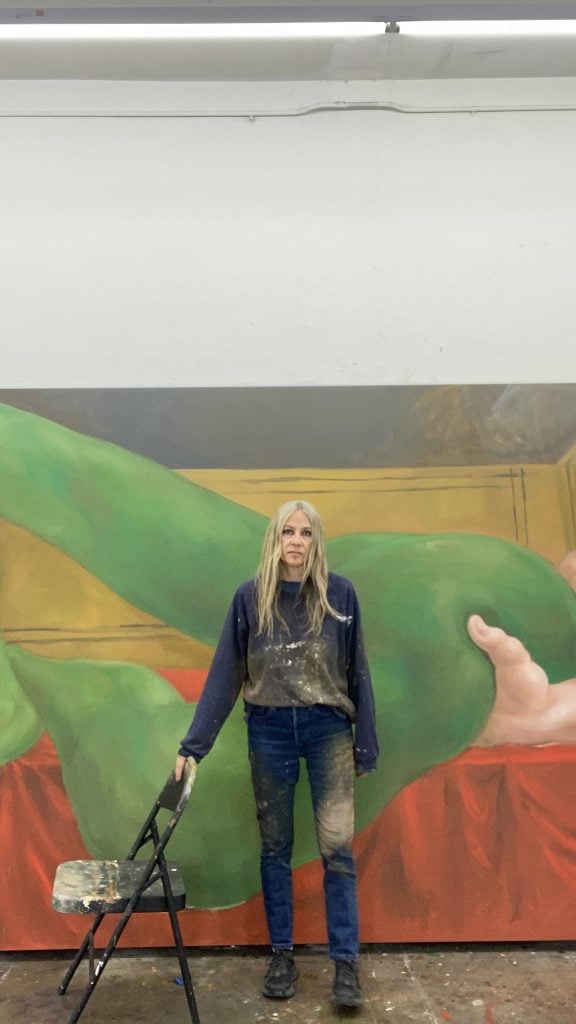
Bonnet, known for her grotesque, bloated figure painting, gives us a peek into her Los Angeles studio.

Sarah Cascone

Each week leading up to the 59th Venice Biennale in April, Artnet News brings you into the studio of an artist as they prepare for acclaimed exhibitions in and around the exhibition.
Born in Switzerland, Los Angeles-based painter Louise Bonnet is known for her grotesque, bloated figures whose contorted bodies remain eerily faceless. The resulting works are both darkly humorous, filled with pathos, and oddly relatable.
Bonnet is one of 213 artists selected by curator Cecilia Alemani for the Venice Biennale’s main show (titled “The Milk of Dreams”) and her absurdist, discomfiting canvases seem like a natural fit for an exhibition named after a book by Surrealist artist Leonora Carrington.
We spoke with Bonnet, who shows with Gagosian Gallery, about how she is preparing for the art world’s most prestigious exhibition.
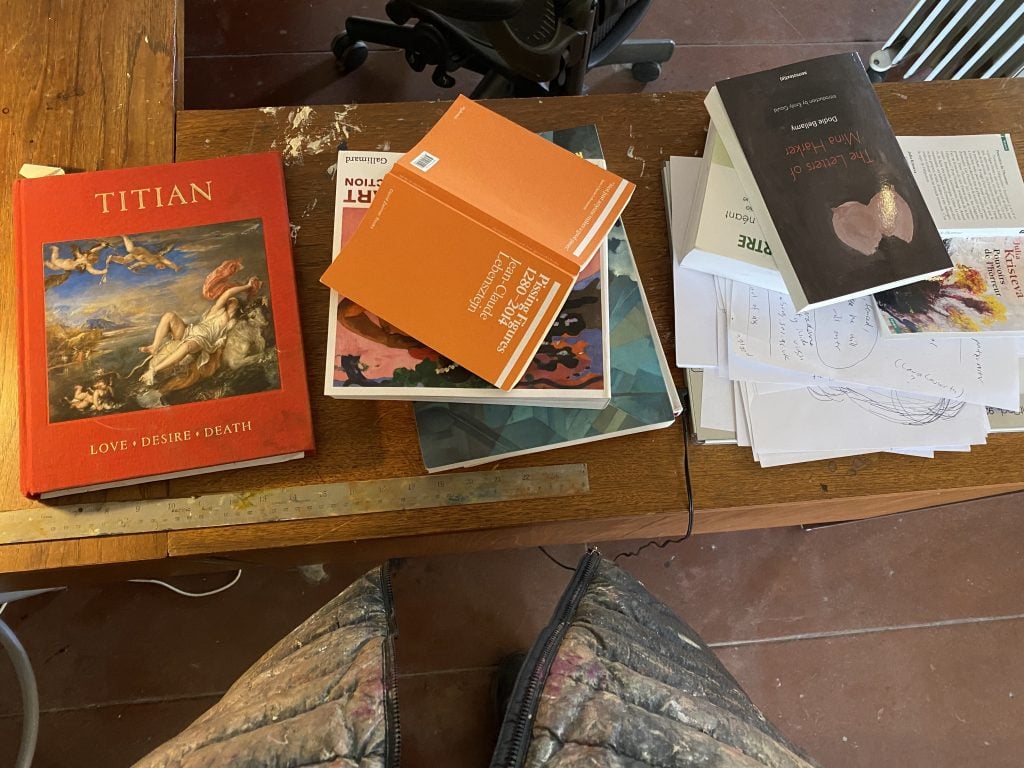
Books in Louise Bonnet’s studio. Photo by Louise Bonnet.
What are the most indispensable items in your studio and why can’t you live without them?
Books. Reading helps me understand what I am doing and helps me find a structure to what I am thinking. Oil paint, obviously. I have been using this French Sienna color a lot.
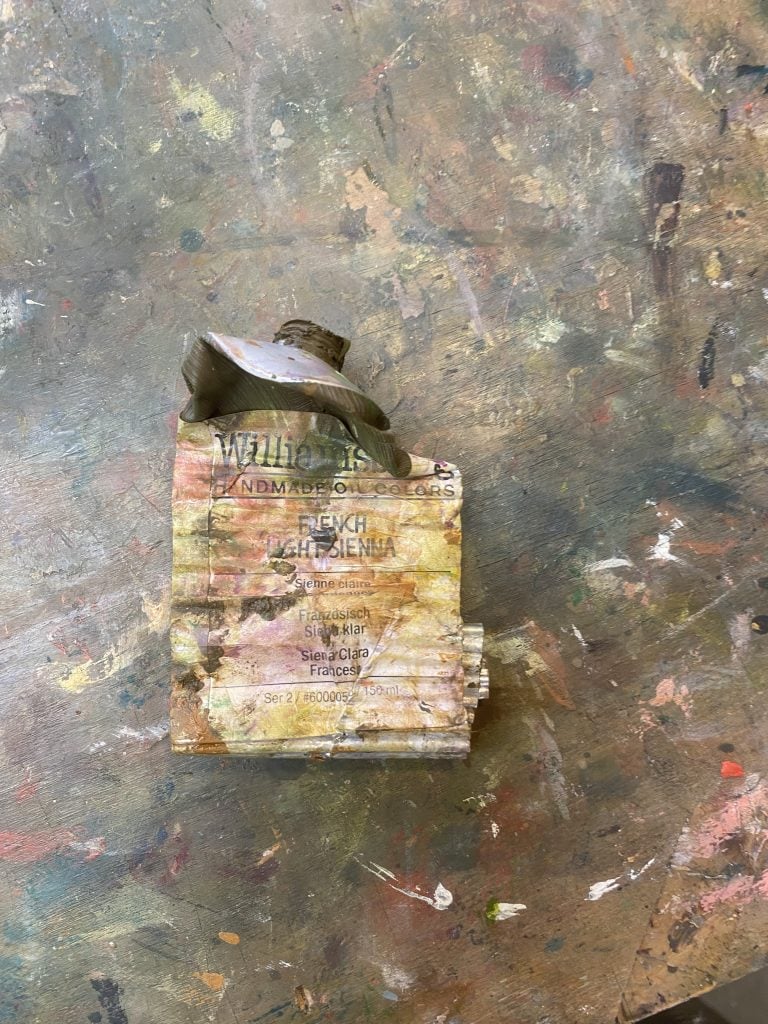
A tube of French sienna oil paint in Louise Bonnet’s studio. Photo courtesy of Louise Bonnet.
When it comes to planning for your presentation in Venice, what is the studio task on your agenda this week that you are most looking forward to?
What will I wear!?
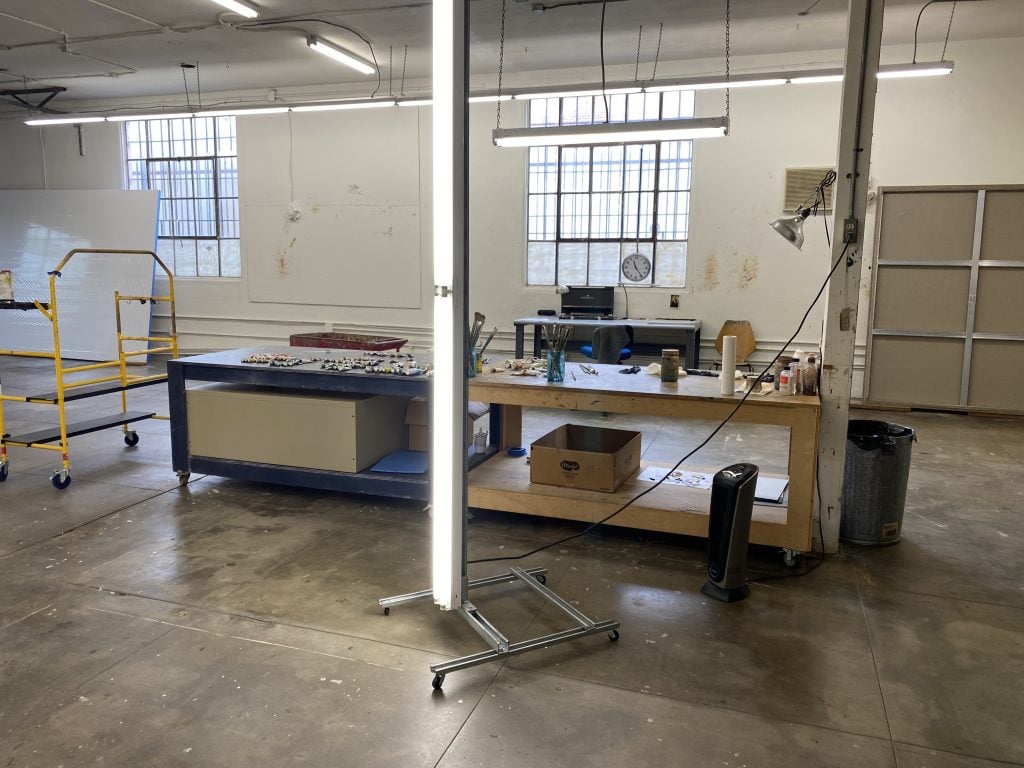
Louise Bonnet’s studio. Photo by Louise Bonnet.
What has been the biggest challenge so far, as you prepare for the Venice Biennale?
Finding the time to do anything other than paint, really. Reading, writing—I need a lot more time to prepare so I can be articulate when I talk about the work.
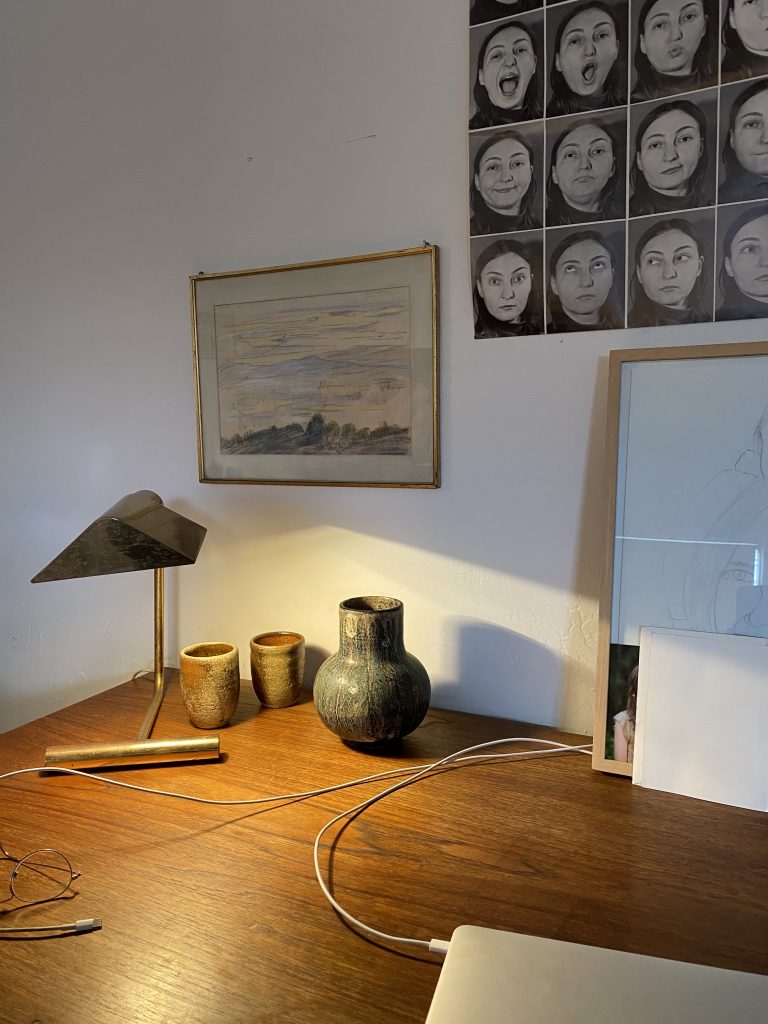
Louise Bonnet’s desk. Photo courtesy of Louise Bonnet.
When you feel stuck while preparing for a show, what do you do to get unstuck?
Insomnia helps a lot. I really get ideas when I’m stuck in bed awake in the middle of the night. But I really hate it, not that I can do very much about it.
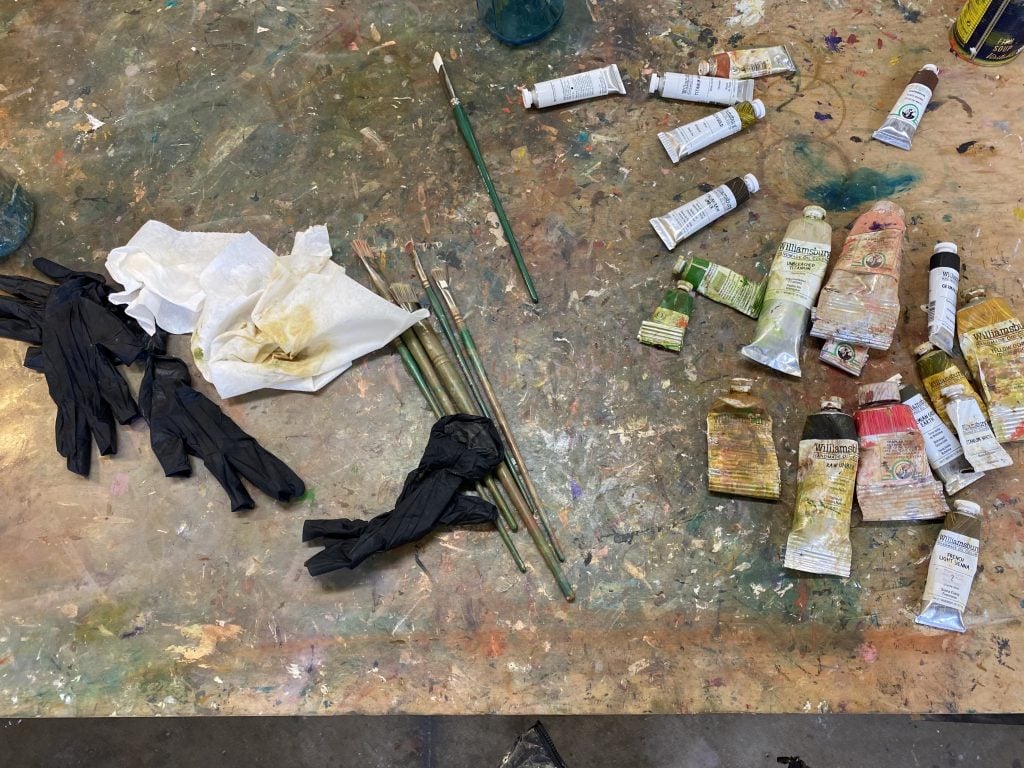
Louise Bonnet’s studio. Photo by Louise Bonnet.
What trait do you most admire in a work of art? What trait do you most despise?
I am a believer in the concept of hate at first sight, and if I go back to look at the work, it might mean it’s something exciting. I also like when something makes me feel jealous and makes me want to go to the studio to work out what it inspired. I don’t think I despise anything in works of art. It’s hard to get over all the (mostly mental) obstacles to actually get anything done, so maybe I despise works of art that never made it out into the world.
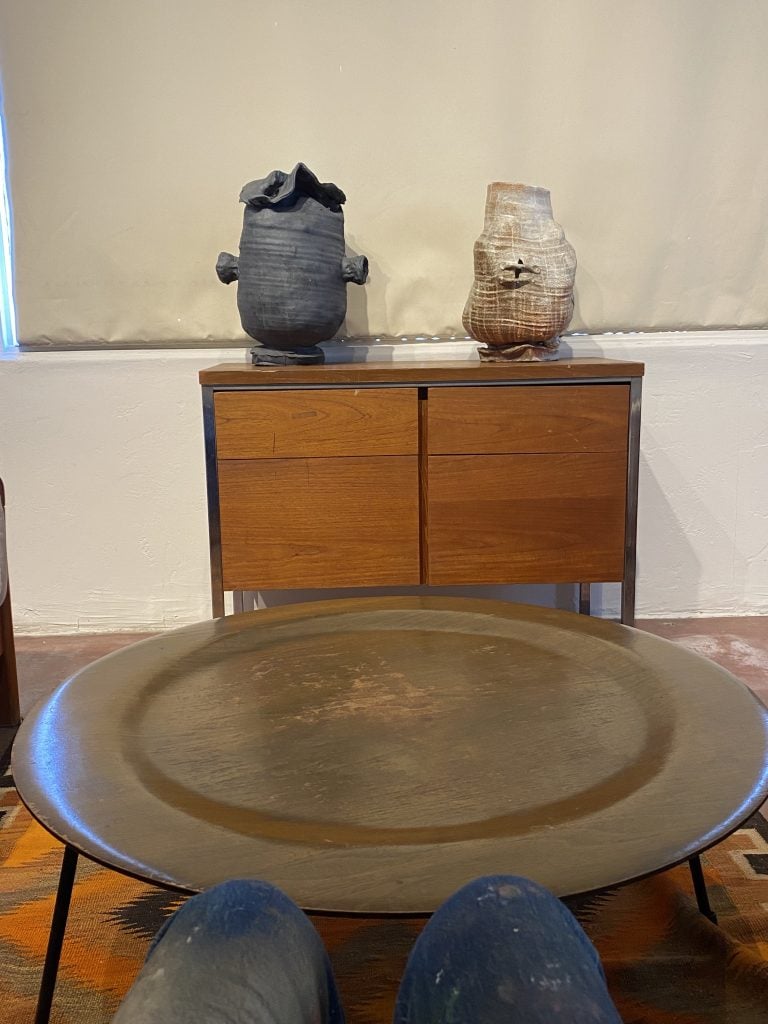
Pottery by Louise Bonnet’s husband Adam Silverman in her studio. Photo courtesy of Louise Bonnet.
What are you looking at while you work?
I love looking at my husband Adam Silverman’s pottery that I have around the studio.
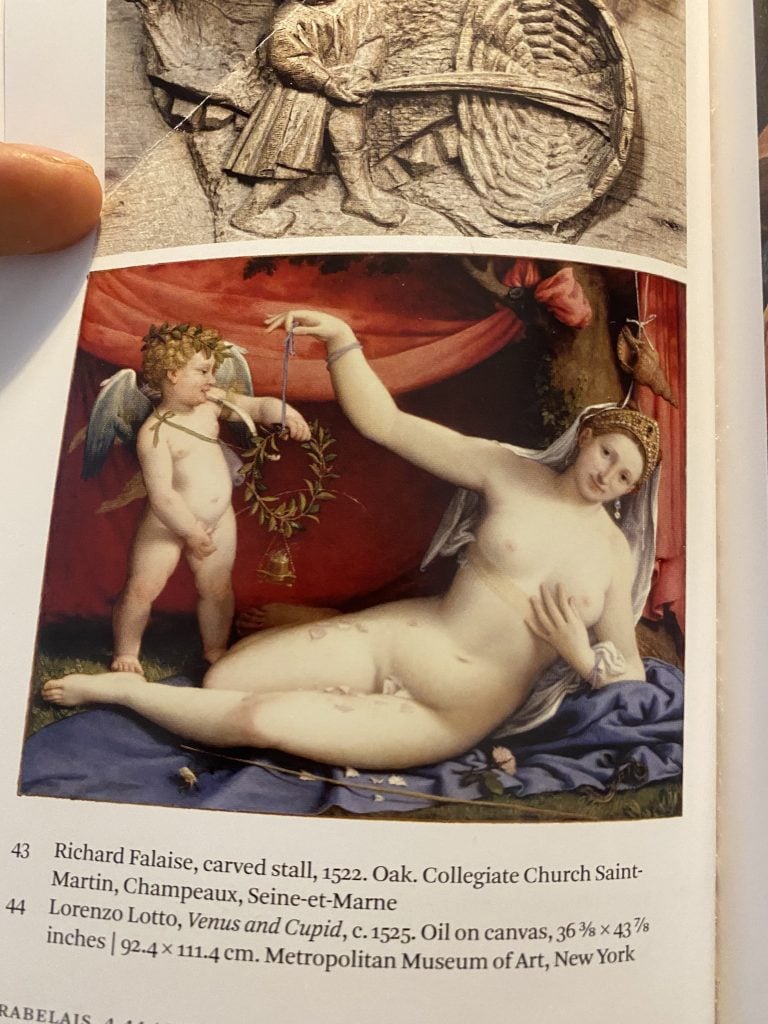
A reproduction of Lorenzo Lotto’s Venus and Cupid (ca. 1525). Photo by Louise Bonnet.
What is one film, piece of writing, or other artwork that inspired you most in preparing for Venice?
Lorenzo Lotto’s Venus and Cupid (ca. 1525).